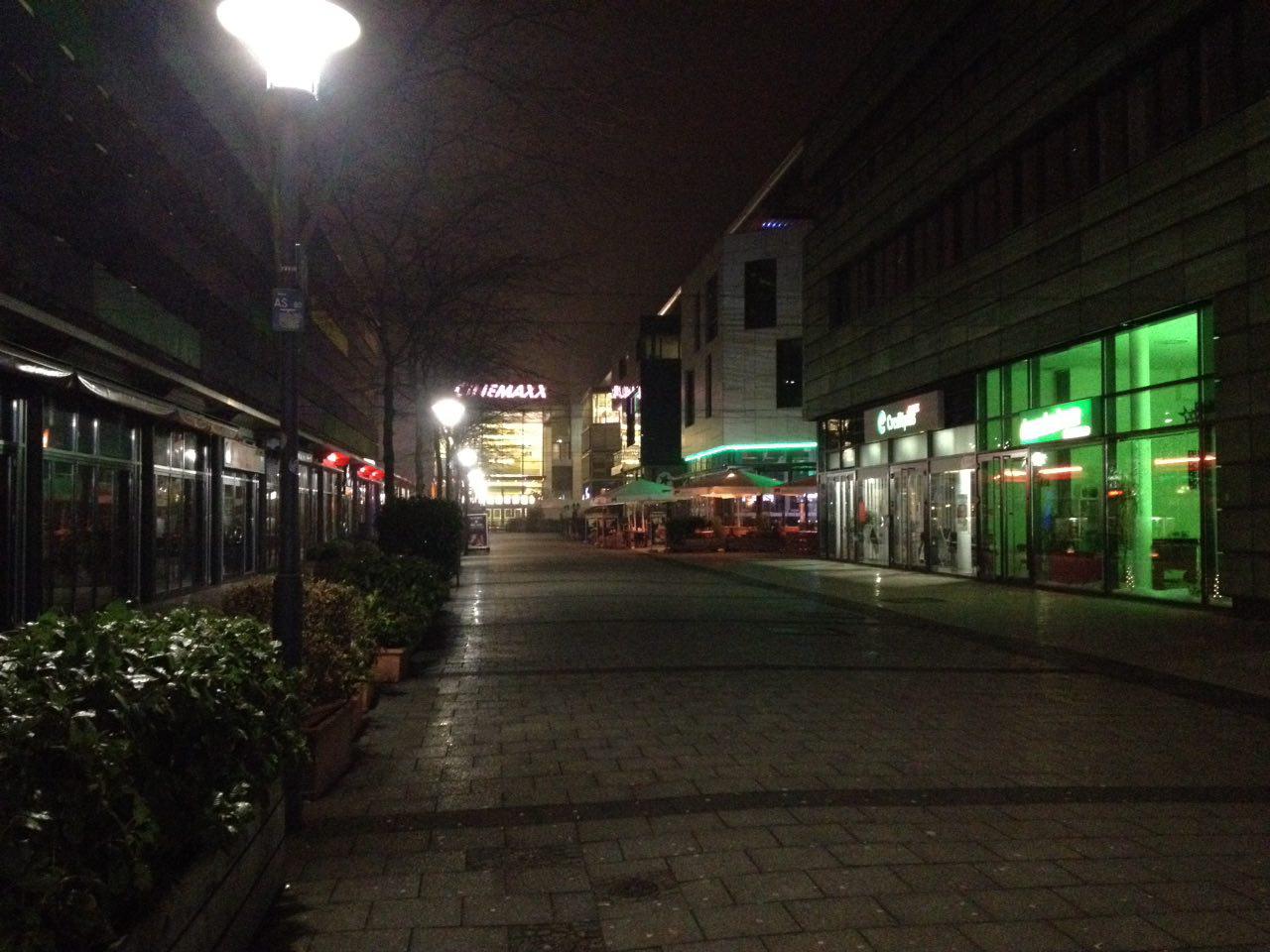Germany, Bielefeld
FC-01x Future Cities (Self-Paced) - Exercise 1 : "Making the Invisible - Visible"

Uploaded on 2017-01-24 by Mira Kopp
My picture shows the pedestrian area on the backside of the main train station of our city in the evening. The area was quite recently built. Visible information: As you can see from the picture, there are shops, restaurants, clubs, fitness studios and a cinema. Also there is quite a lot of light such as street lighting and colourful lights from the shops - but no people. Invisible information: So the question arises, why is there no one in the streets? And if there is no one in the streets, how can the businesses maintain their sites? To answer these questions, we need to have a closer look on the picture and combine the data and information, we have. From the picture we can also tell that there is no light in the upper levels of the building. That indicates that there is actually no one living in the upper levels, so they might serve as offices etc. This means that people are not „automatically“ using the area when they come and leaving home any given time of the day, but only during working hours. Another aspect which is not visible, but which I could have measured when taking the photo is that it was pretty cold that day, i.e. -4°C, and people usually don’t like hanging around in the streets when it’s cold. Furthermore, there are no totally public (free) sitting opportunities like benches. So to relax, people need to enter one of the businesses and pay. So in order to see if people are usually using this area, we would also need observe the situation under other conditions (pleasant temperature, daytime) and especially over a long time. And that’s where the Information city approach could help. Now from my observations (I have visited the area several times), people in this area are almost always just heading directly for their destinations (e.g. cinema / restaurant / club / hairdresser) without making any long way around or enjoying the area. I assume that this could be changed by converting some offices into apartments (because people would automatically, constantly and more frequently use the area, as well as contribute to a feeling of safety, since others are always around), installing benches and playground facilities as well planting a few more trees or lawn. But this should be tested in a simulation and reconsidered with knowledge we have from earlier approaches. A problem would still be that the area lies between a freeway and the train station.